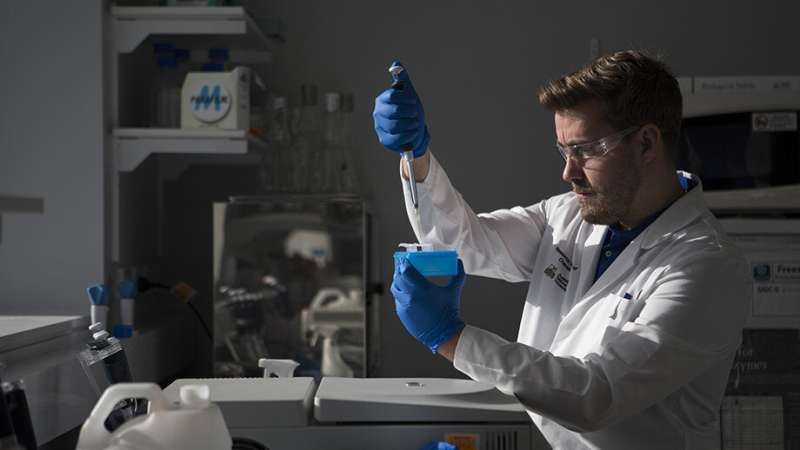Researchers develop cleaner, greener fertiliser

Research from The Australian National University (ANU) has produced a method that transforms waste into a new fertiliser.
The fertiliser is cleaner to produce and more effective than those currently on the market. It has been developed in collaboration with CSIRO and the Grains Research and Development Corporation.
The process takes pollutants from waterways and carbon dioxide from the atmosphere and uses them to create an otherwise rare fertiliser - so it not only helps grow food, but reduces pollution.
The fertiliser combines ammonia, a common waterway pollutant, and carbon dioxide to produce citrulline. Citrulline is found naturally and also happens to be rich in nitrogen - which is essential for plant growth.
Citrulline's potential for such an application had not been previously considered.
Dr Lee Alissandratos from the ANU Research School of Chemistry, said early plant trials conducted with CSIRO have produced "very promising" results.
"The plants that were fed citrulline grew even better than the ones on urea - a widely employed nitrogen fertiliser," Dr Alissandratos said.
"But citrulline only occurs naturally in relatively small quantities, so its potential use as a fertiliser depends on the availability of suitable production methods.
"We have addressed this through a new process that is both efficient and green, as it uses pervasive environmental pollutants as the raw materials."
Dr Alissandratos said the new method not only had environmental pay-offs but was a money saver.
"At the moment we pay a lot of money to remove ammonia from our water-ways," he said.
"If allowed to stay in the environment, it leads to toxic algal blooms and generation of nitrous oxide, which is a potent greenhouse gas.
"Carbon dioxide is another greenhouse gas, well-known for its role in global warming.
"Our method takes these pollutants and transforms them into something useful—citrulline."
According to Dr Alissandratos, the researchers' new method presents a whole host of benefits.
"Fertilisers like urea are produced through unsustainable processes. It requires a lot of energy, and consumes vast quantities of fossil fuel," he said.
"Our method is much more sustainable. It uses enzymes - nature's own catalysts - and is carried out in water with little energy input and without toxic by-products.
"Our results indicate we are able to utilise ammonia and carbon dioxide as they are found in various waste streams, from common household sewerage to heavily polluted industrial waste.
"It could therefore be carried out anywhere with access to these. You could set it up close to where the fertiliser is needed, removing transport carbon footprint and cost."
Dr Alissandratos and his team are now evaluating commercial applications of their method.
"We would like to carry out some larger-scale trials that would really allow Australian farmers to benefit from our research" Dr Alissandratos said.
More information: Apostolos Alissandratos et al. One-Pot Multienzymatic Transformation of NH3, CO2, and Ornithine into the Organic Nitrogen Plant Fertilizer Citrulline Using a Single Recombinant Lysate of E. coli, ACS Sustainable Chemistry & Engineering (2019). DOI: 10.1021/acssuschemeng.9b00301
Provided by Australian National University


















